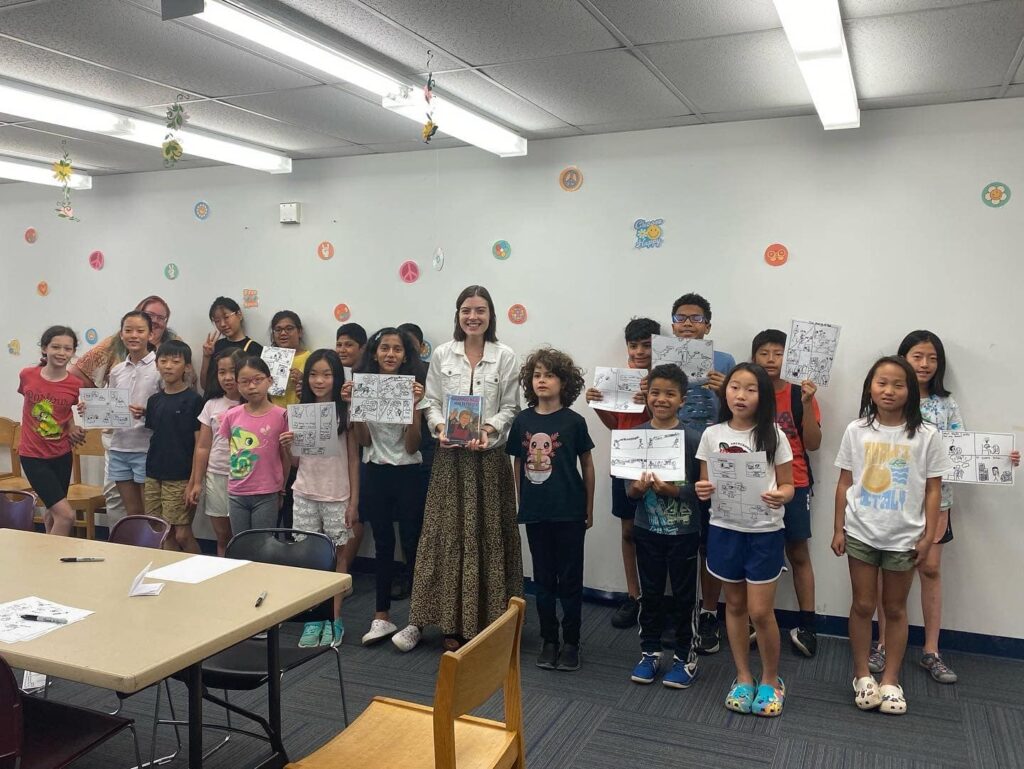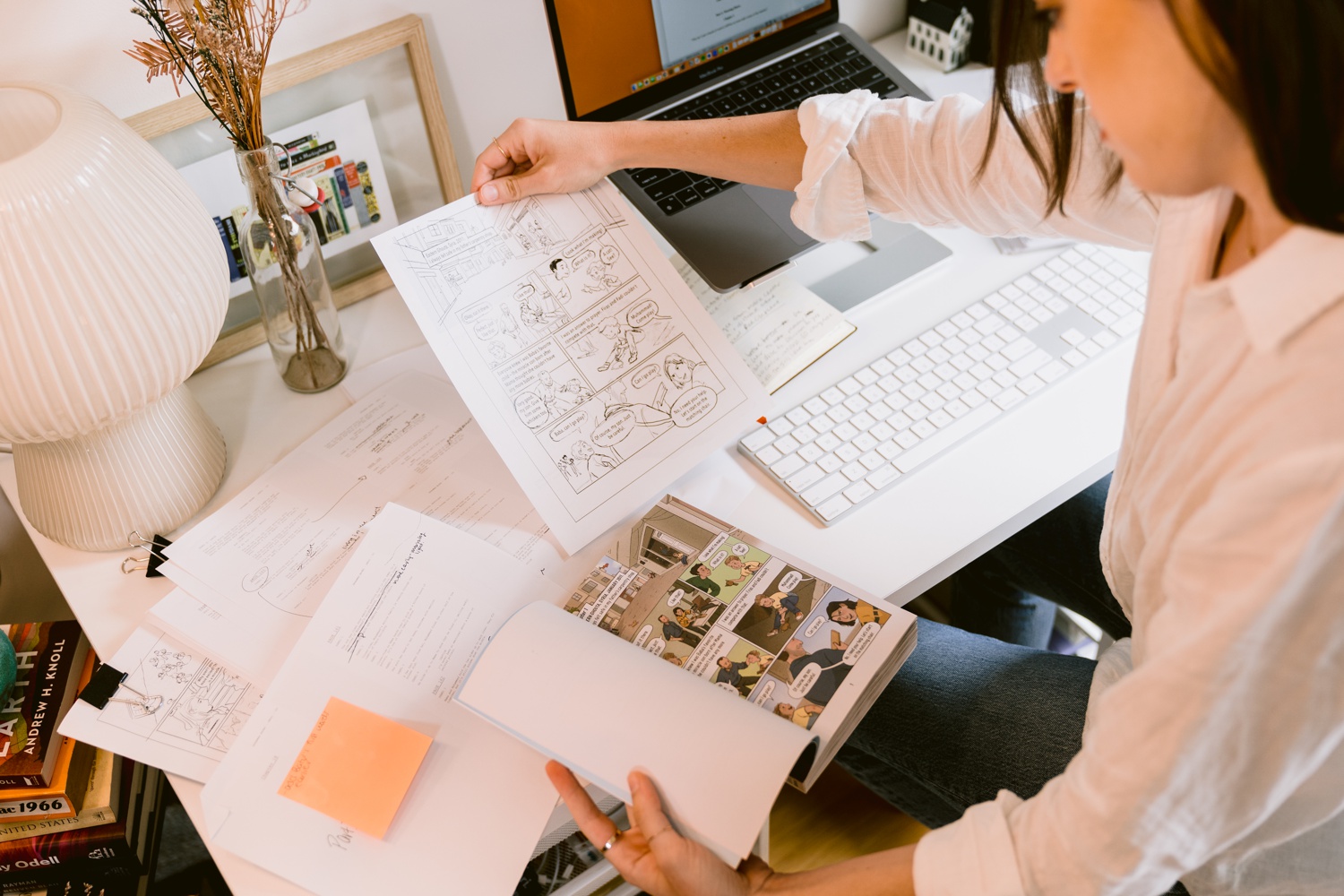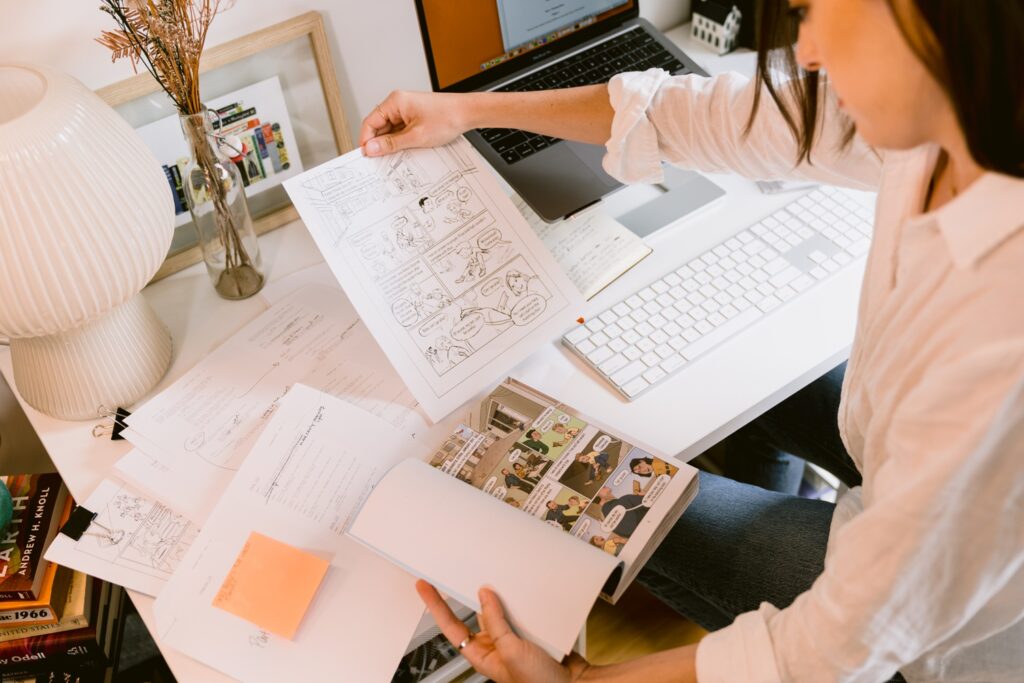
There’s one response I keep getting when I tell folks that Muhammad Najem, War Reporter is a graphic novel: You can draw?
I actually can draw, thank you very much. But more pertinently, I didn’t illustrate this book! I just wrote it.
*suspicious face* You wrote a graphic novel?
Yup.
Storytelling that Starts with a Script
Graphic novels need writers too, not just (insanely talented) artists. Think about a graphic novel manuscript like a movie script. It includes not only dialogue, but also descriptions of the scene, details on characterization, narration (whether that’s voiceover in a movie or captions in a graphic novel), and more.
A script also sculpts the story. Where does it begin? Where does it end? And where does it meander in between? Most importantly: what is the story trying to say?
A script alone does not make a graphic novel, however. That’s where visual artists come in.
They breathe life into the setting and the characters, their emotions and challenges. And if you’re lucky— as my co-author Muhammad and I am— your artist will create a world beyond your words.
Julie Robine is one such artist. She took our manuscript and turned it into something alive, adding nuance and emotion, details and humor.
That’s what I love about writing in this medium: the final product is a collaboration, a meeting of the minds, more than just the sum total of its parts.
In a word, it’s magic.
Here’s an inside look at how the magic of MUHAMMAD NAJEM, WAR REPORTER came together.
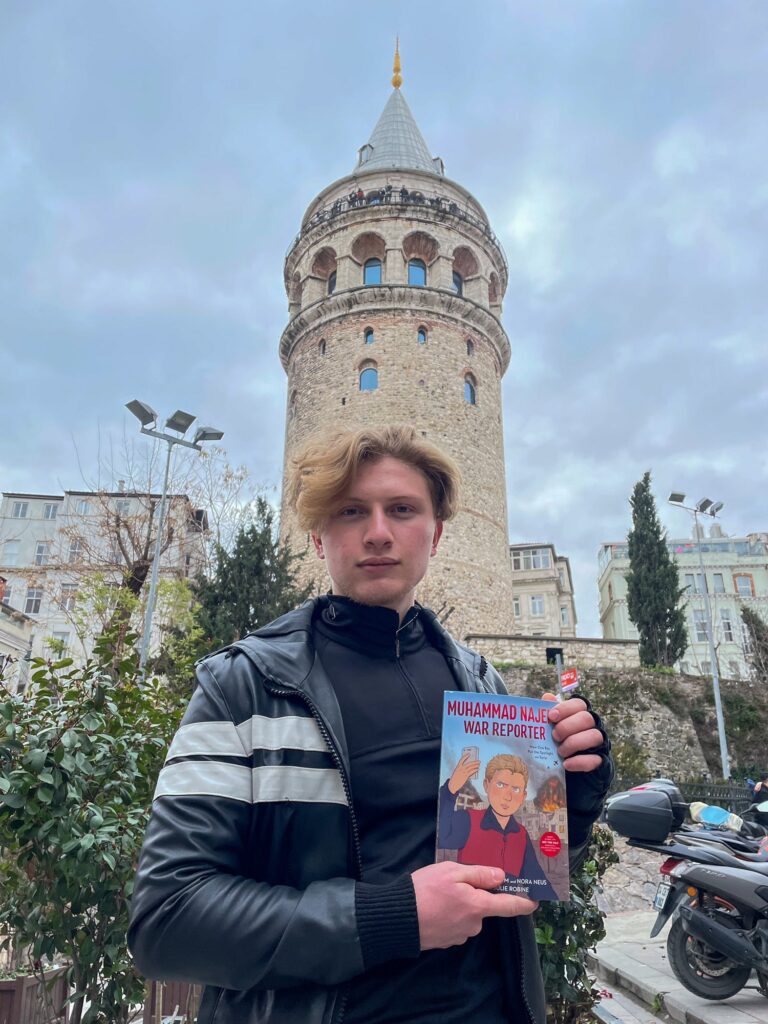
Writing and Revising a Graphic Novel Script
We start in winter 2019 with a draft that was decidedly… not magic.
Don’t let the Courier font fool you: I just typed this up in Microsoft Word and basically made up the format as I went along.
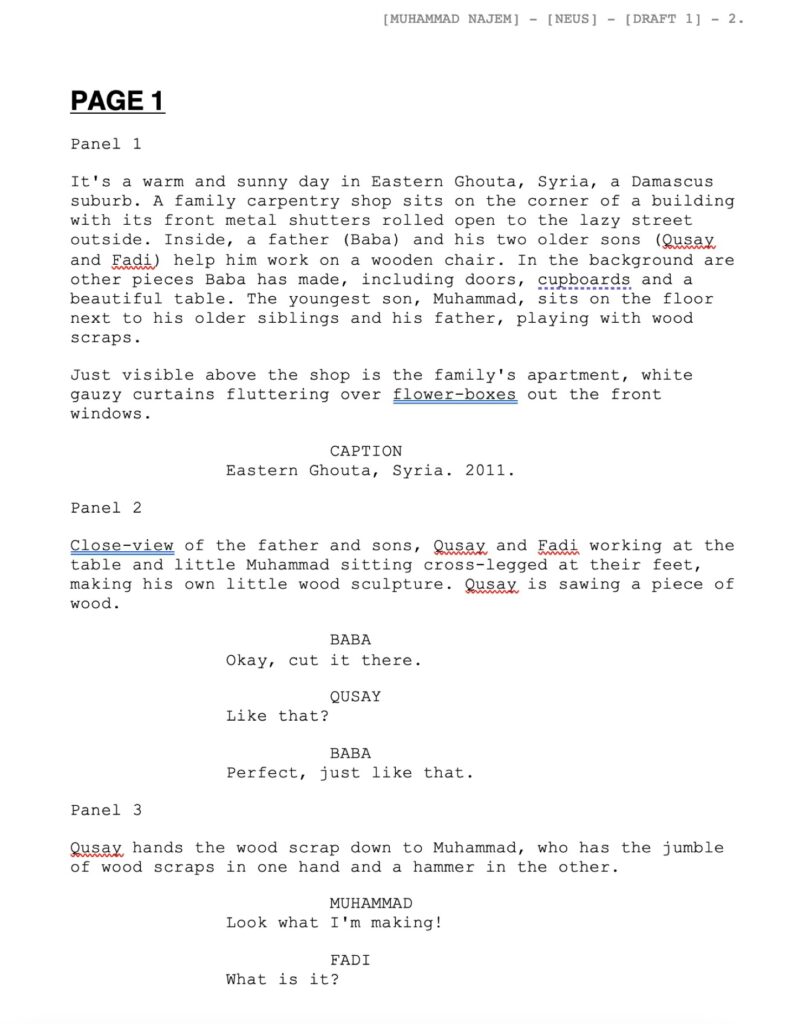
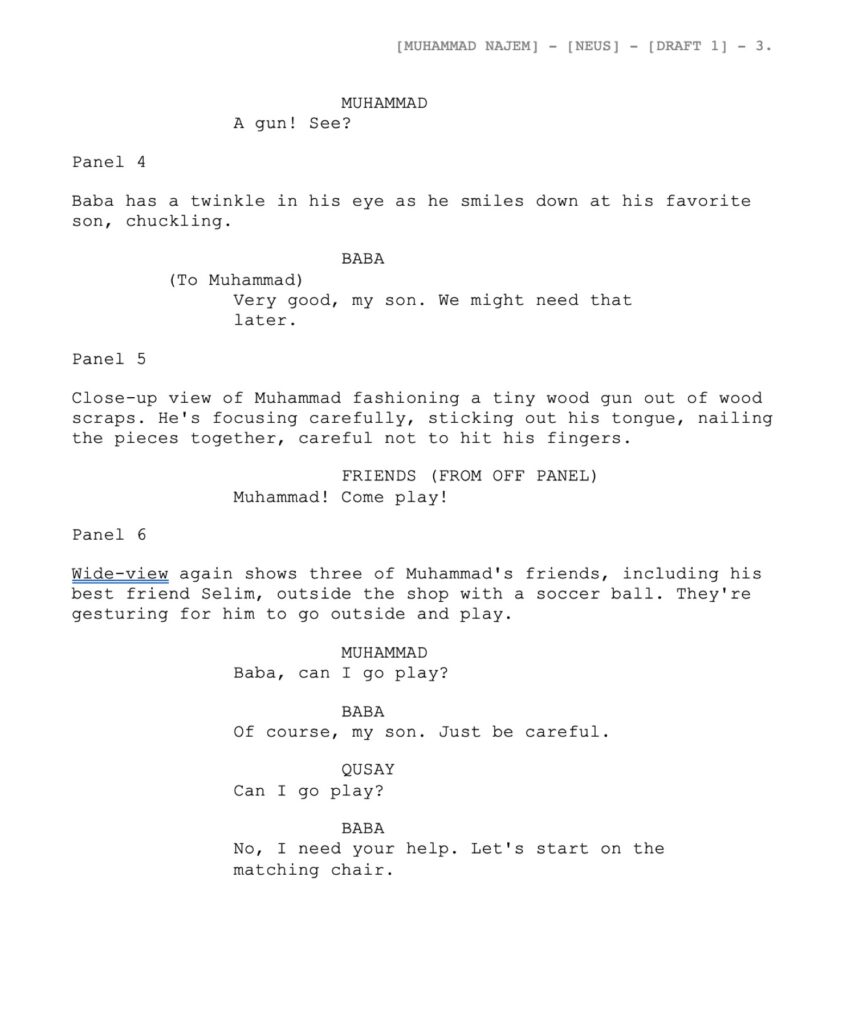
At that point, there was no first person narration from Muhammad. My incredible agent Wendi Gu recommended shifting the perspective of the story. That decision stuck through the final draft and added to the emotional heft of the book.
In a January 2020 draft, we added captions to clarify the perspective. Again, Wendi was an invaluable collaborator at this stage. She helped us understand how small details of the story would translate in an American publishing context. For example, early drafts included a scene of Muhammad making a toy gun out of scraps of wood from his father’s carpentry shop.
Wendi left a comment, which you can see in the draft below: “While I’m sure this is reflective of real life (just thinking of all his toy guns here) I think that this imagery could be problematic in an American publishing context.”
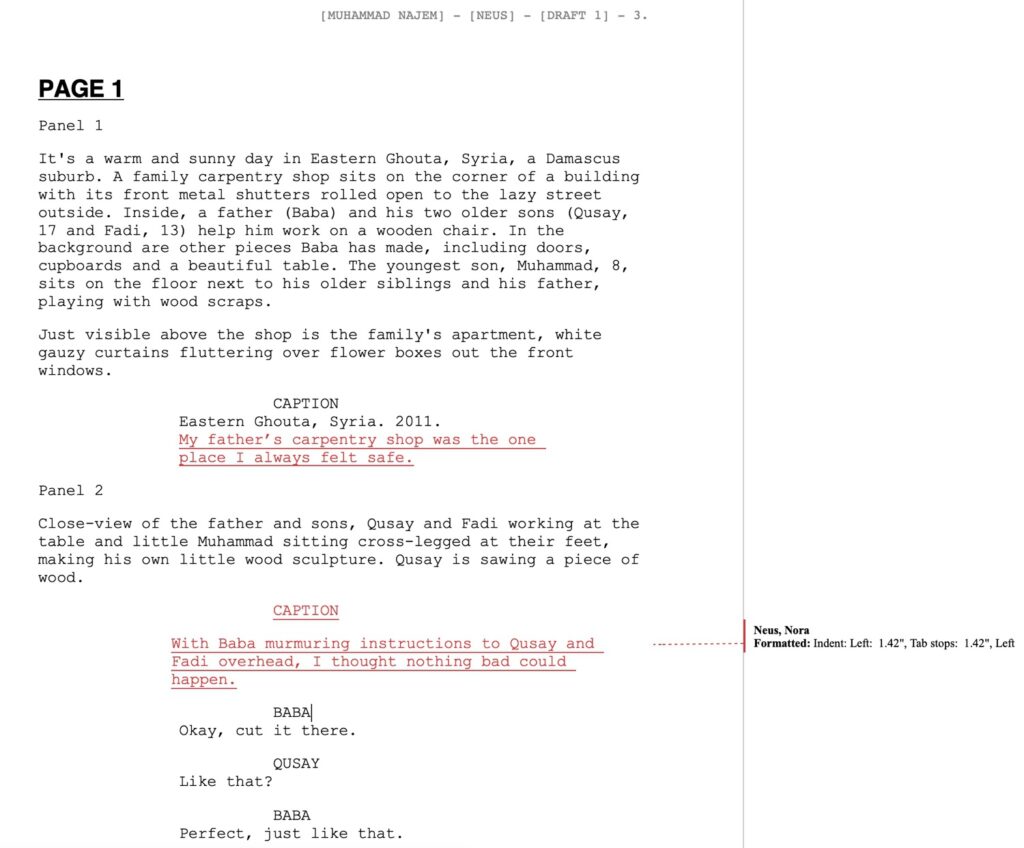
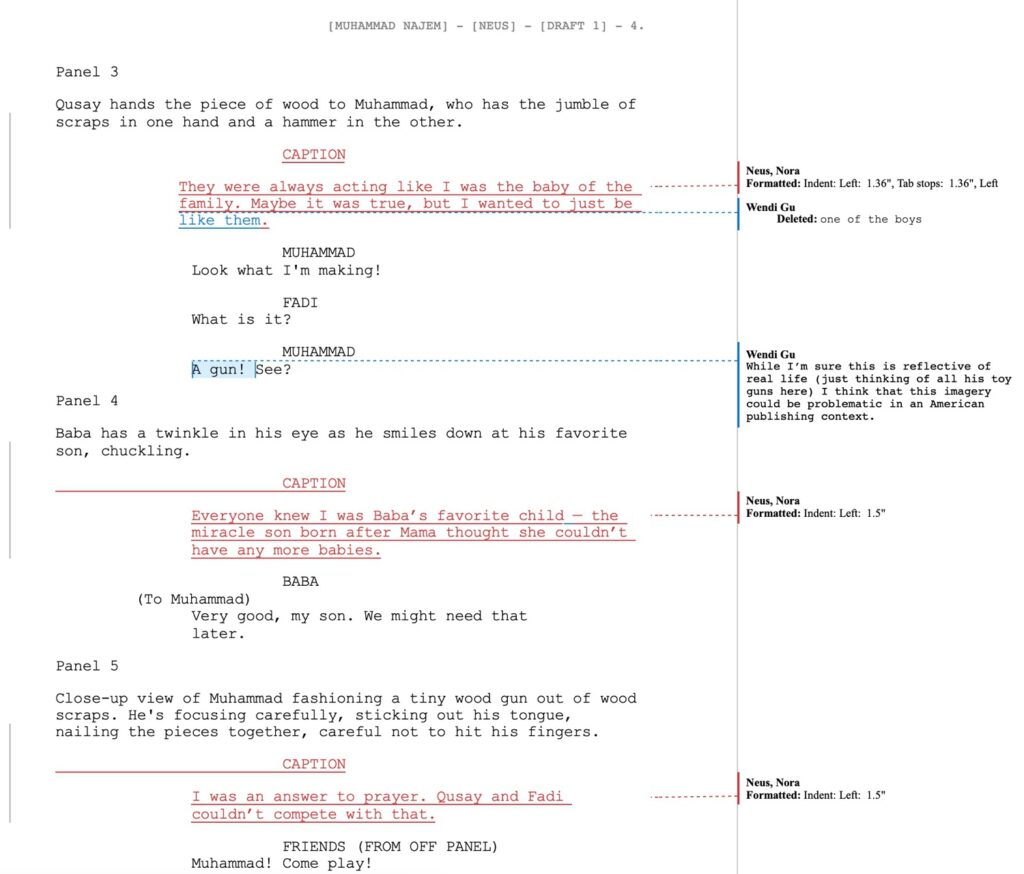
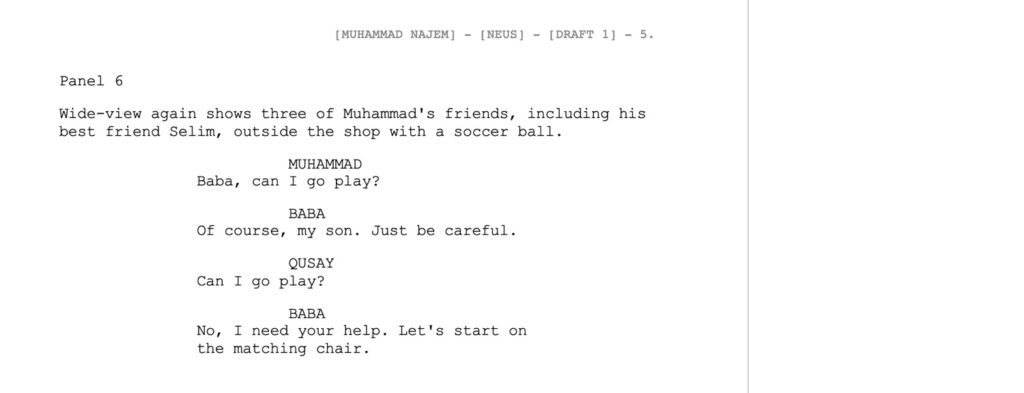
At Wendi’s suggestion, Muhammad and I revisited that part of the script. He also remembered making little wooden cats as a kid. So we updated the script and made a few other tweaks. This one change inspired adding cats as a continued motif throughout the book.
We made continued edits to the first page throughout the first few months of 2020. By the time we sold the project to Andrea Colvin at Little, Brown, in summer 2020, the first page looked markedly different. Note the added captions that characterize young Muhammad’s role in his family as the “miracle child.”
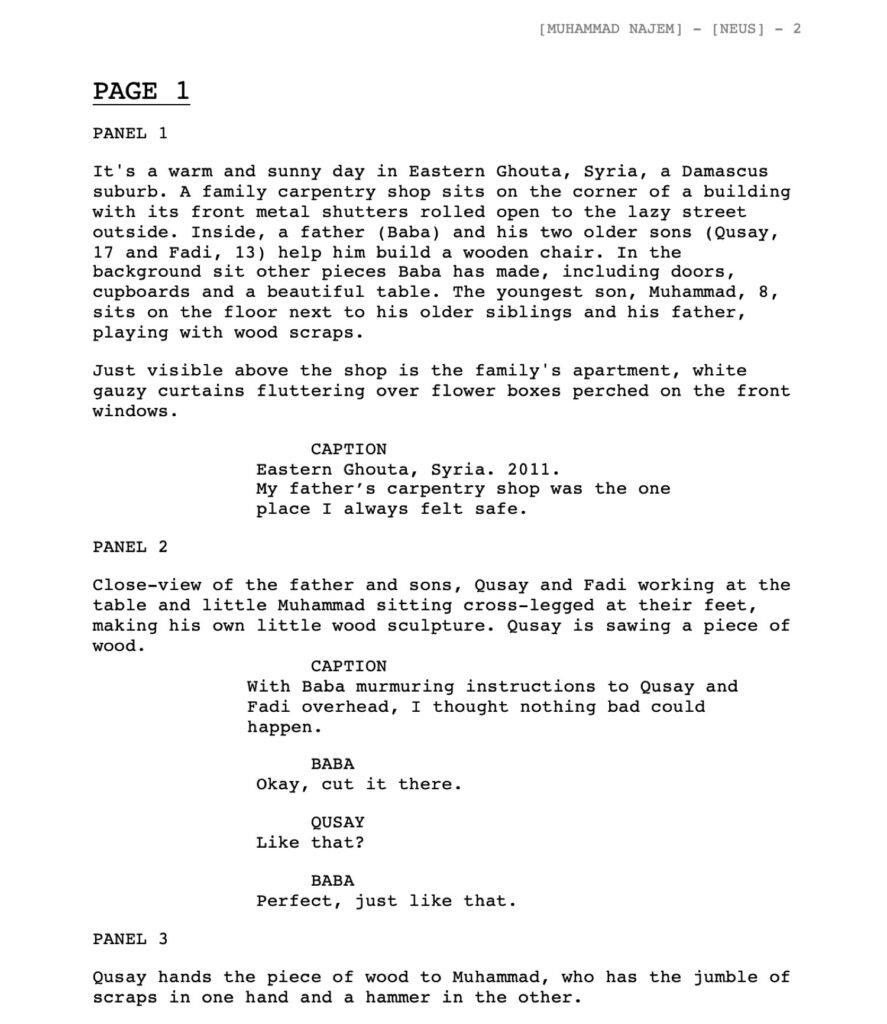
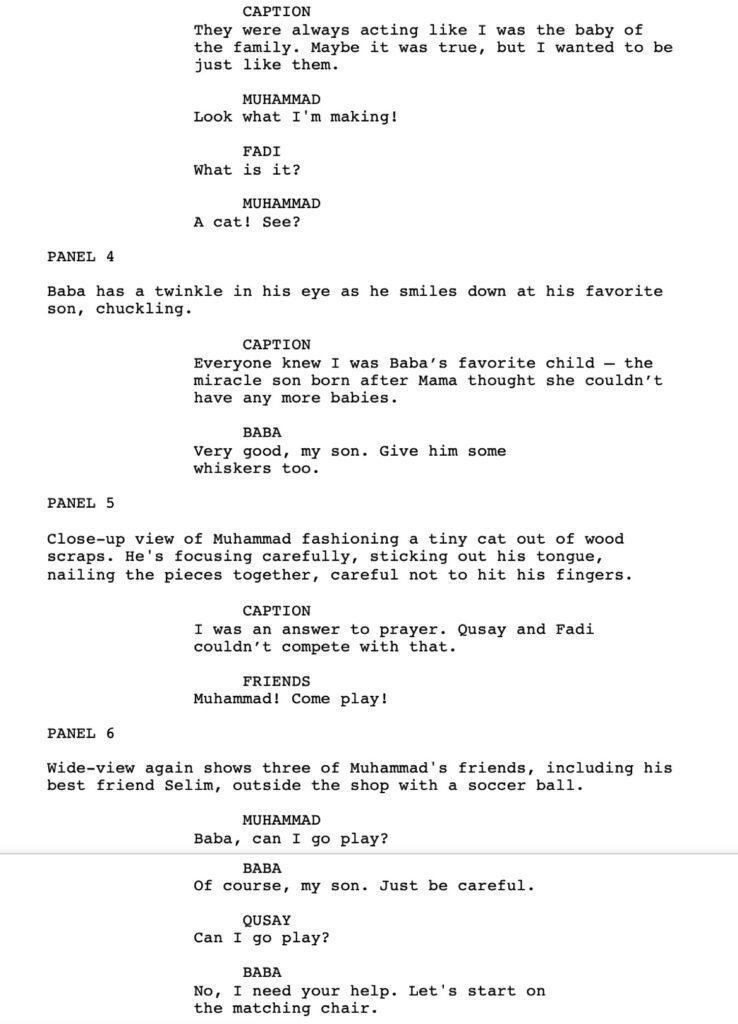
Creating the Illustrations
Then came the magic.
Andrea hired Julie Robine as our illustrator after seeing her sample of the first few pages. Even then, Muhammad and I knew something special was happening.
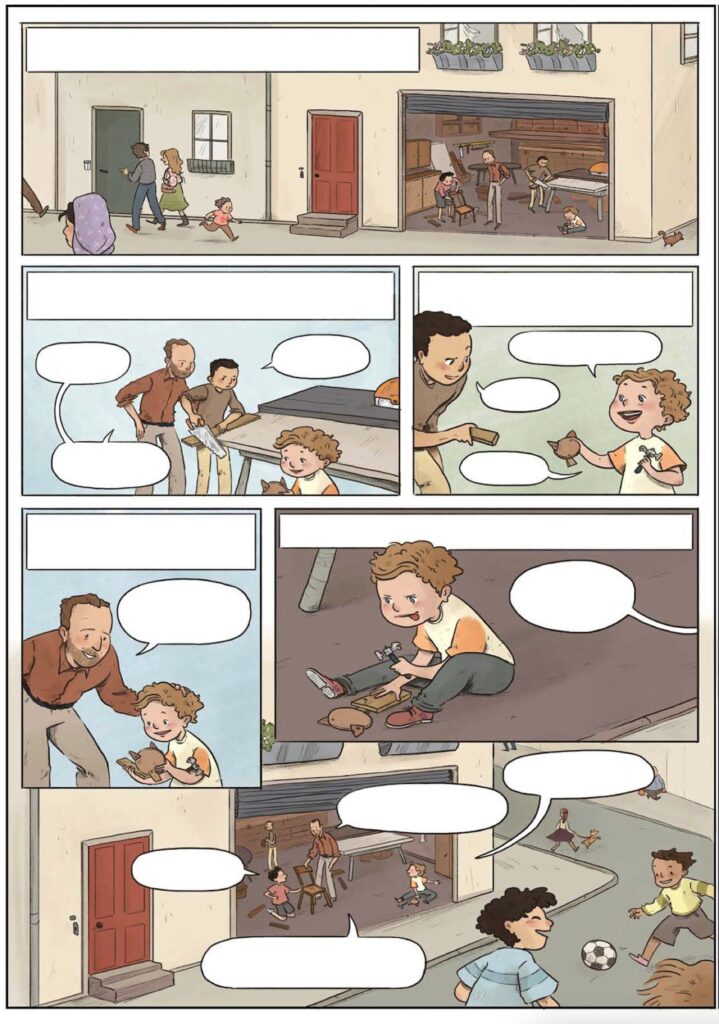
Julie so captured the heart of Muhammad’s story. We knew immediately that she was the right artist for this project.
And then the collaboration started! We started a group text thread between us and Julie, and Muhammad’s brother Qusay. We shared ideas and sketches and FaceTimed to get to know each other better. Trust was a huge part of this process.
First came rough sketches, under the direction of art director Karina Granda…
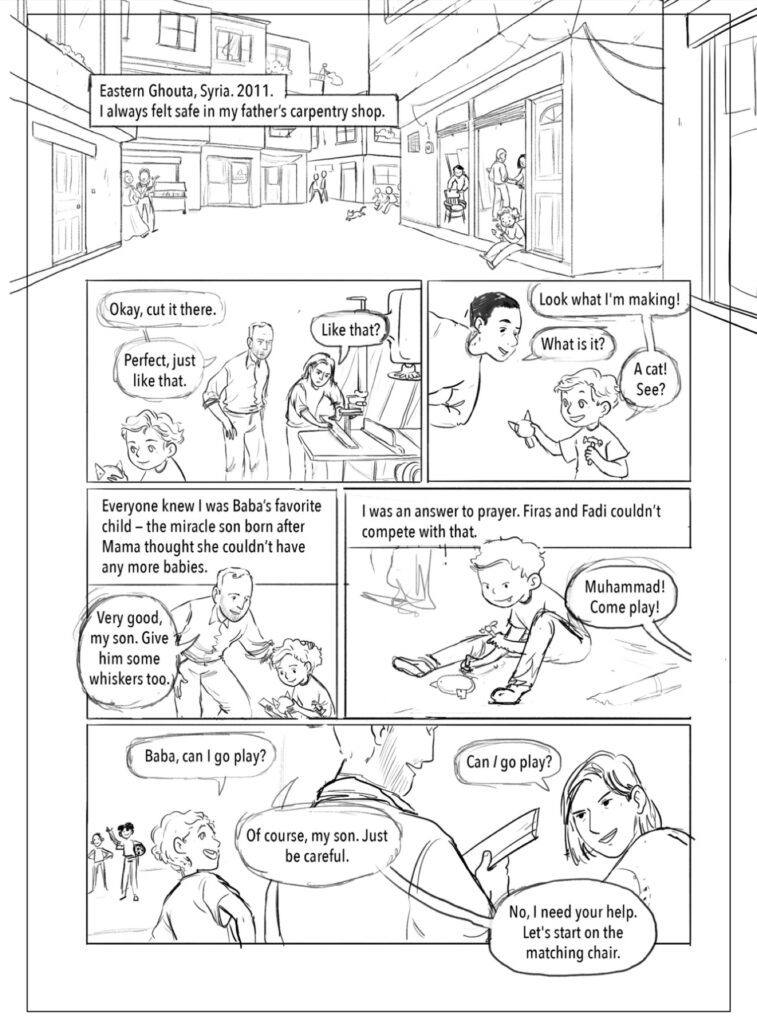
…then inks, about six months later, with a note from Julie.
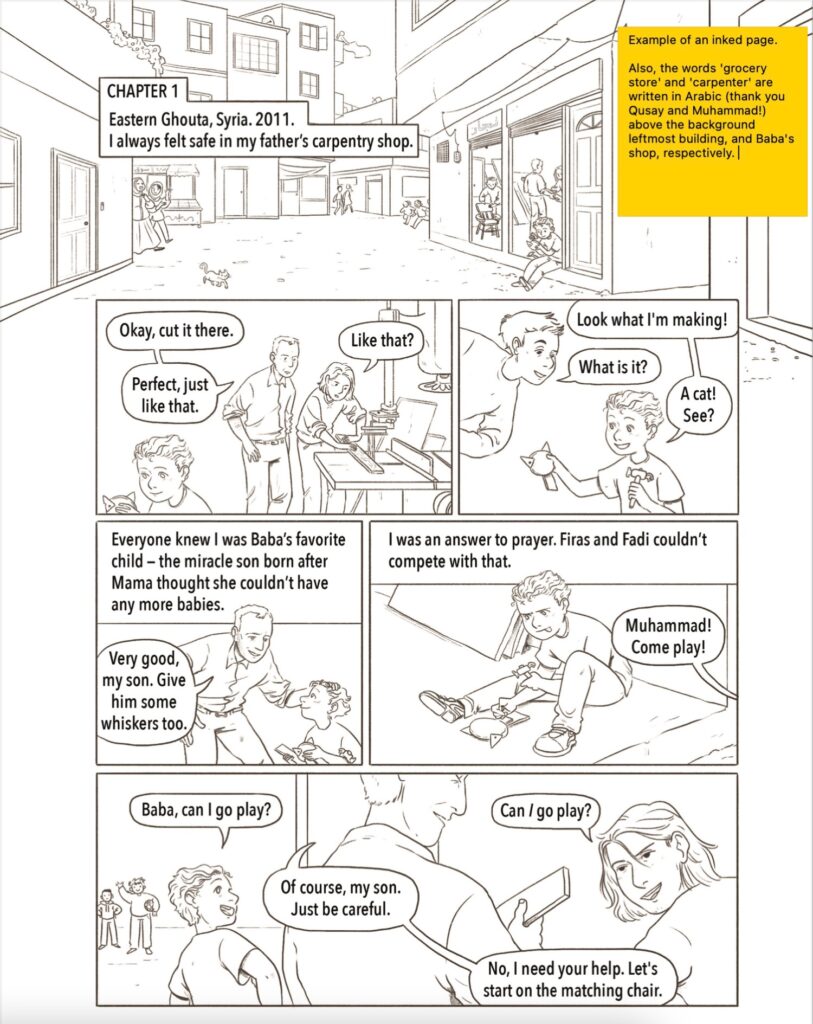
And finally, color, almost a year after Julie started.
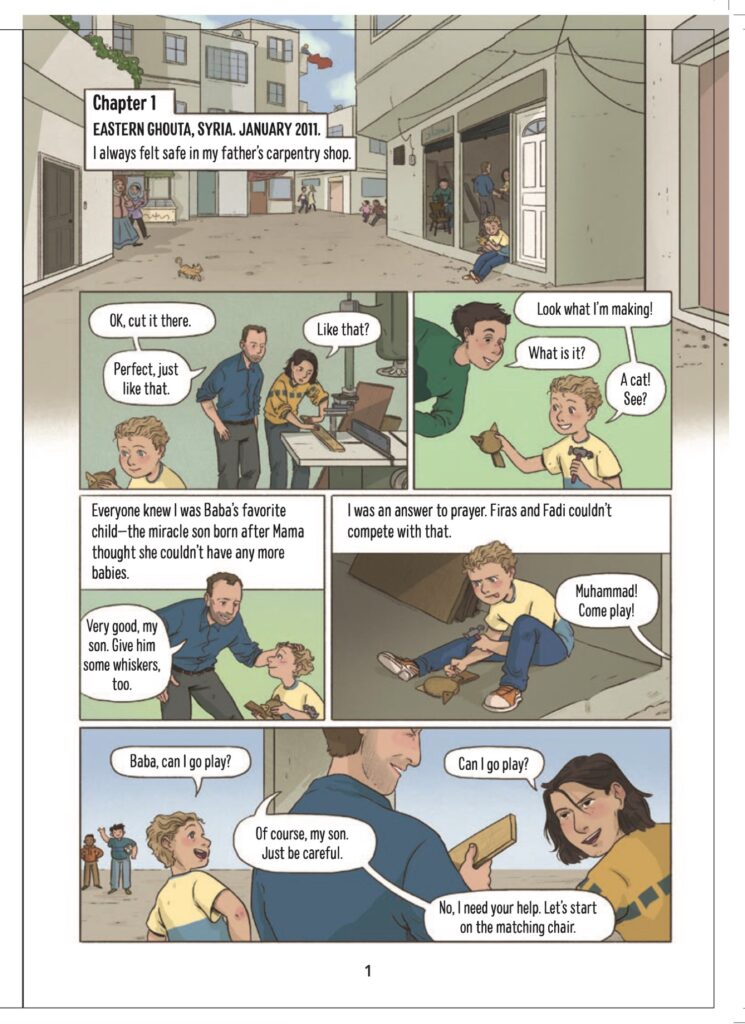
There were a lot— a LOT— more drafts in between these. But the point is that Muhammad Najem, War Reporter was a truly collaborative effort. It’s one that everyone involved can be proud of. This graphic novel even went on to be selected as one of NPR’s Best Books of 2022 and a Junior Library Guild Gold Standard Selection. And most importantly, we’ve heard from so many young readers who say they’re inspired by Muhammad’s story.
Teaching Students How to Write a Graphic Novel
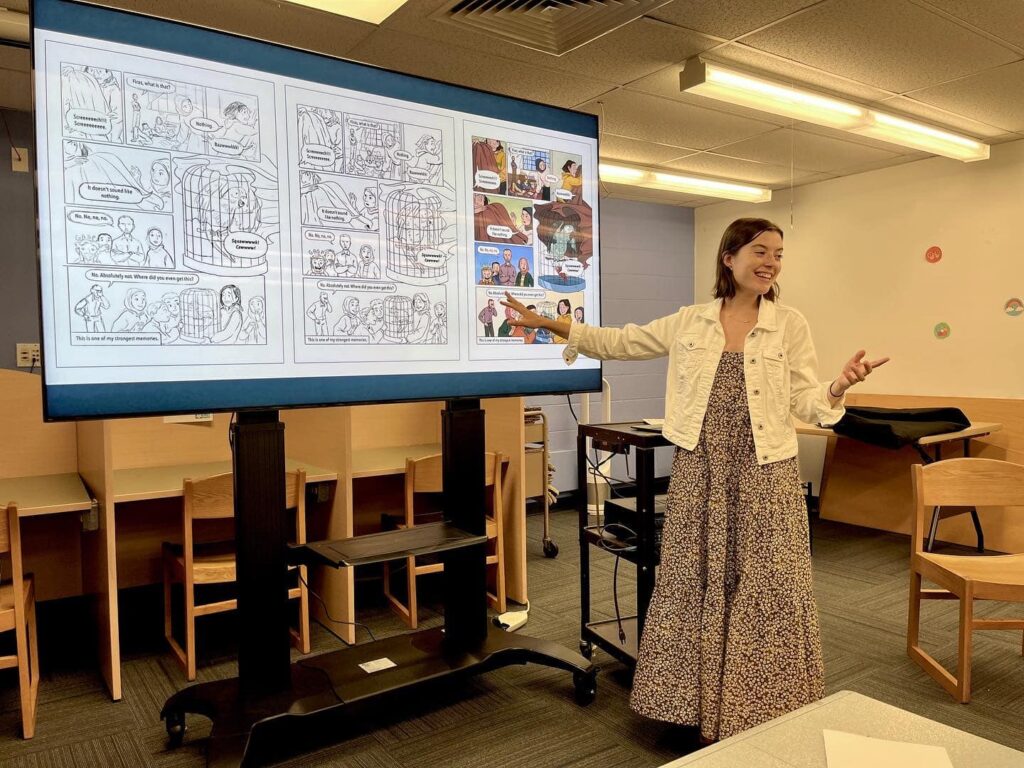
Are you a parent, educator, or Girl Scout leader who knows kids who would love to write their own graphic novels? I offer engaging in person or virtual workshops for K12 students. Using my graphic novel Muhammad Najem, War Reporter, I share behind-the-scenes videos and drafts from the collaborative creative process. Then, I lead students to create the first page of their very own graphic novel! By the end of our workshop, students will have created a full four-panel comic from beginning to end, and have an opportunity to share with the group and get my feedback.
This workshop also happens to satisfy all five requirements of the Girl Scouts Cadette Comic Artist Badge!
Learn more here.
